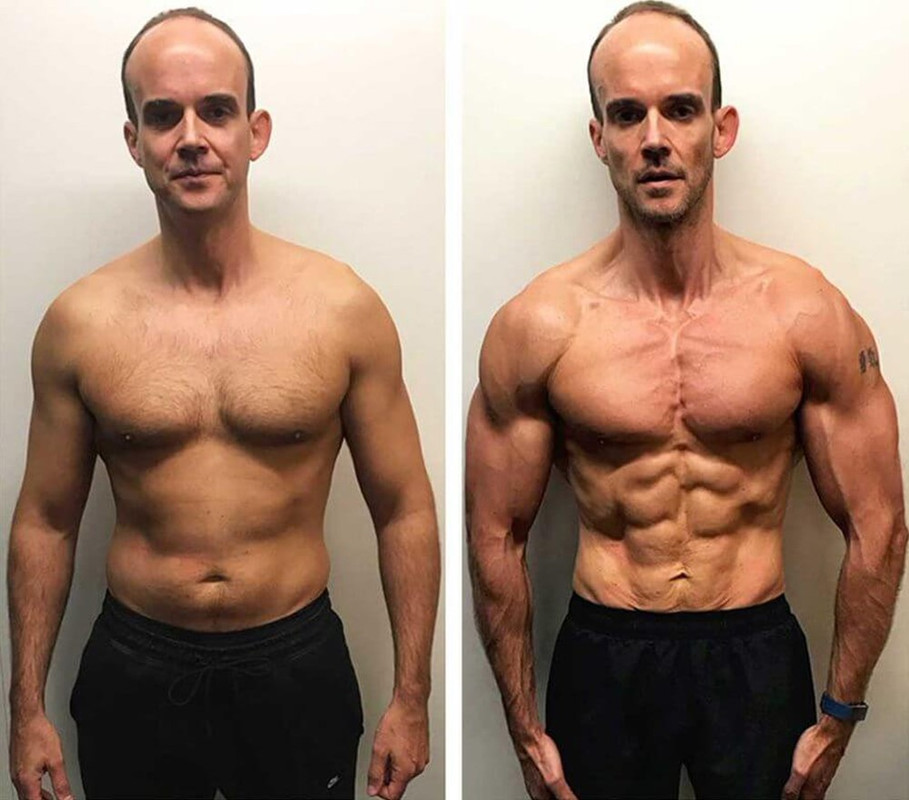Napsgear: Body Recomposition: Burn Fat and Build Muscle Together
Posted: Fri Jun 03, 2022 7:38 am

Contrary to popular assumption, it is possible to increase muscle mass while simultaneously reducing body fat. Here's how to do it.
When it comes to increasing muscle tissue, many men's bodybuilding and fitness articles recommend bulking up. However, many women (and some men) have no desire to watch their weight rise while developing lean mass!
Yes, you may "recompose," or gain muscle while losing fat. But, to put it mildly, it's a challenge! To feed muscle growth, you must provide adequate calories in the form of protein, carbohydrates, and fats, dialing in each macronutrient to help your body tap into fat stores. However, a healthy diet isn't adequate on its own. You should also do a combination of resistance training and high-intensity cardio to get the best effects.
Here are some of my favorite methods for balancing muscle gain and fat loss.
Eat Moderate Calories
It's critical to identify your caloric "sweet spot" if you want to gain muscle while also burning fat. You must consume enough calories to fuel muscular growth while also stimulating fat release from storage.
You're not on a diet, after all! You're attempting to build muscle while mostly burning stored fat. Someone who is going all out at the gym needs the right macronutrient balance and enough calories to fuel their muscle-building and fat-loss efforts.
Increase Your Protein Intake
Getting enough protein throughout the day, spread out evenly, helps prevent your muscle tissue from degradation. Your body recognizes that there is no need to break down muscle tissue to obtain amino acids when they are circulating about in your bloodstream.
So don't be afraid to amp up and eat more protein. Increase your protein intake to at least 1 gram per pound of body weight on a daily basis. Are you going all out in the gym or trying to get super lean? More, like 1.5 grams or more, may be beneficial.
Yes, you read that correctly. It may seem excessive, but new research shows that eating five times the current daily protein requirement (0. 36 grams per pound of body weight) had no negative effects on body fat stores.
A high-protein diet has also been demonstrated to increase the amount of calories you burn throughout the day. The thermic effect of food (TEF) refers to an increase in the amount of calories expended as a result of the digestion, absorption, and distribution of nutrients.
Reduce Your Carbohydrate Intake
You knew it was going to happen, didn't you? Yes, carbs must be reduced—not completely, but to a point where they are effectively utilized. Consume the majority of your carbs when they are most beneficial to you: two hours before and after your workout. The balance of your carbohydrates should come from high-fiber vegetables throughout the day. Vegetables will help you maintain a healthy level of energy while also preventing hunger.
Aim for 1.5 grams of carbs per pound of body weight throughout the day as a starting point. Of course, the amount of exercise you get in a day has an impact. Consider lowering your carbs to 0.75-1.0 gram per pound on non-training days.
Consume Healthy Fats
Too many people drastically limit their fat intake in an attempt to lose weight.
Fats are essential for maintaining optimal cell structure and hormone levels, both of which are necessary for promoting muscle growth. They also contribute to your feeling of fullness.
Every day, aim to ingest roughly 0.5 grams of fat per pound of body weight. To receive the many benefits that diverse types of healthy fats have to offer, make sure you include a range of sources.
Train for Gains, Not for Fat Loss
Spending a lot of time doing circuit training with light weights for high reps isn't the best way to grow muscle. Instead, concentrate on including compound activities like squats, deadlifts, presses, and rows into your workout. These techniques allow you to lift the most weight while also stimulating the most total muscle mass, thus they should be the foundation of every workout. Concentrate on gradually increasing the weight you can utilize while aiming for 5-8 repetitions every set.
Higher-rep training can still be done, but only with a weight that is difficult to perform 15-20 reps with. It's best to combine heavy resistance exercise with high-repetition training for maximum muscle growth.
Cardio, Not Calories
Long sessions of steady-state cardio are one of the most common mistakes people make when trying to lose weight. This helps you burn calories, but it can also put you in a caloric deficit, causing your body to burn muscle tissue rather than fat.
Instead, I propose high-intensity interval training (HIIT) as your primary type of cardio if you want to achieve a combination of leanness and muscle. Why? HIIT has been demonstrated to sustain muscle mass and even improve fat utilization as a source of energy. That's a winning formula!
HIIT is strenuous on the body, therefore don't do it every day. Do one to three sessions per week, with three being the absolute maximum. Scale back if you find that HIIT is draining your energy in the weight room.